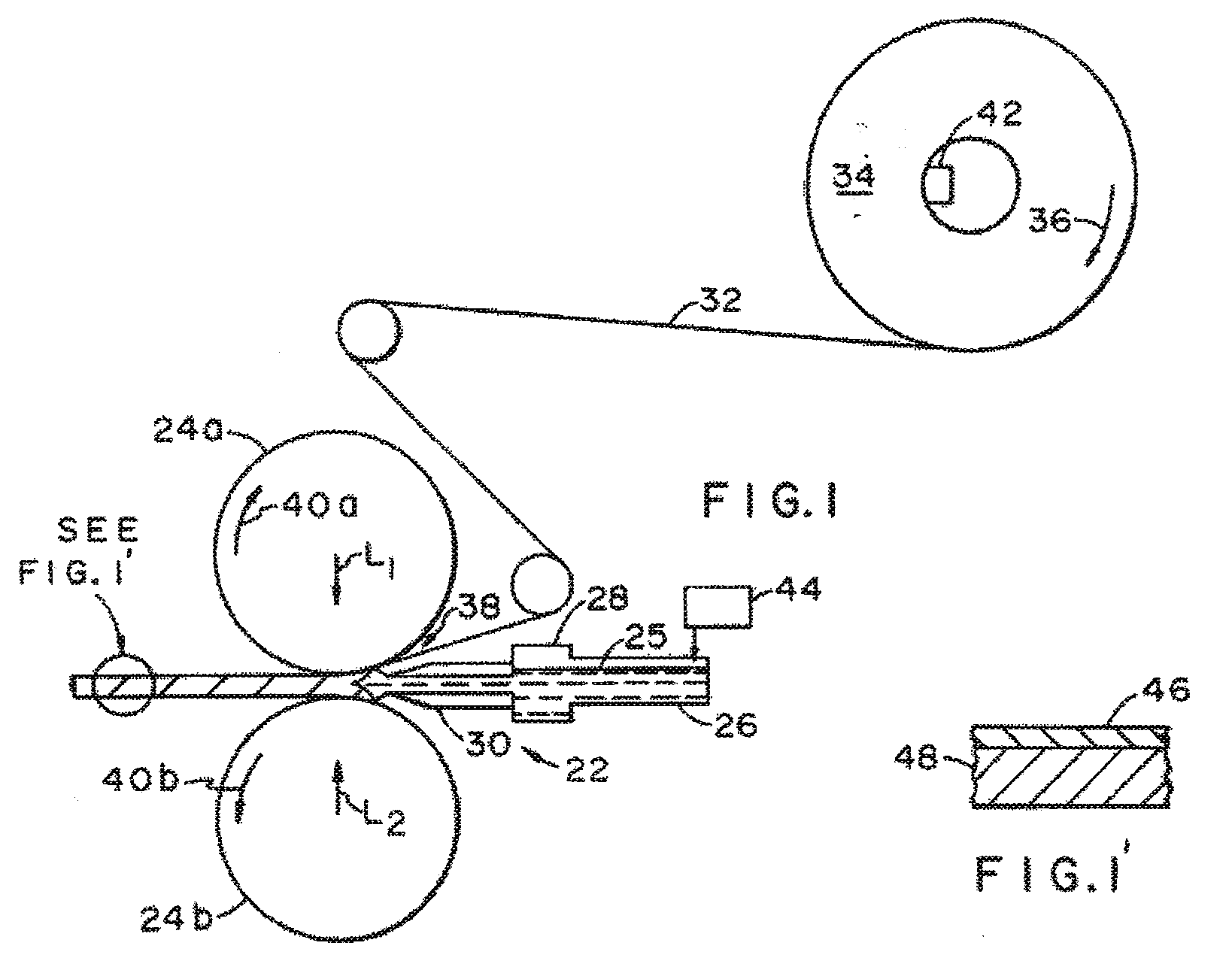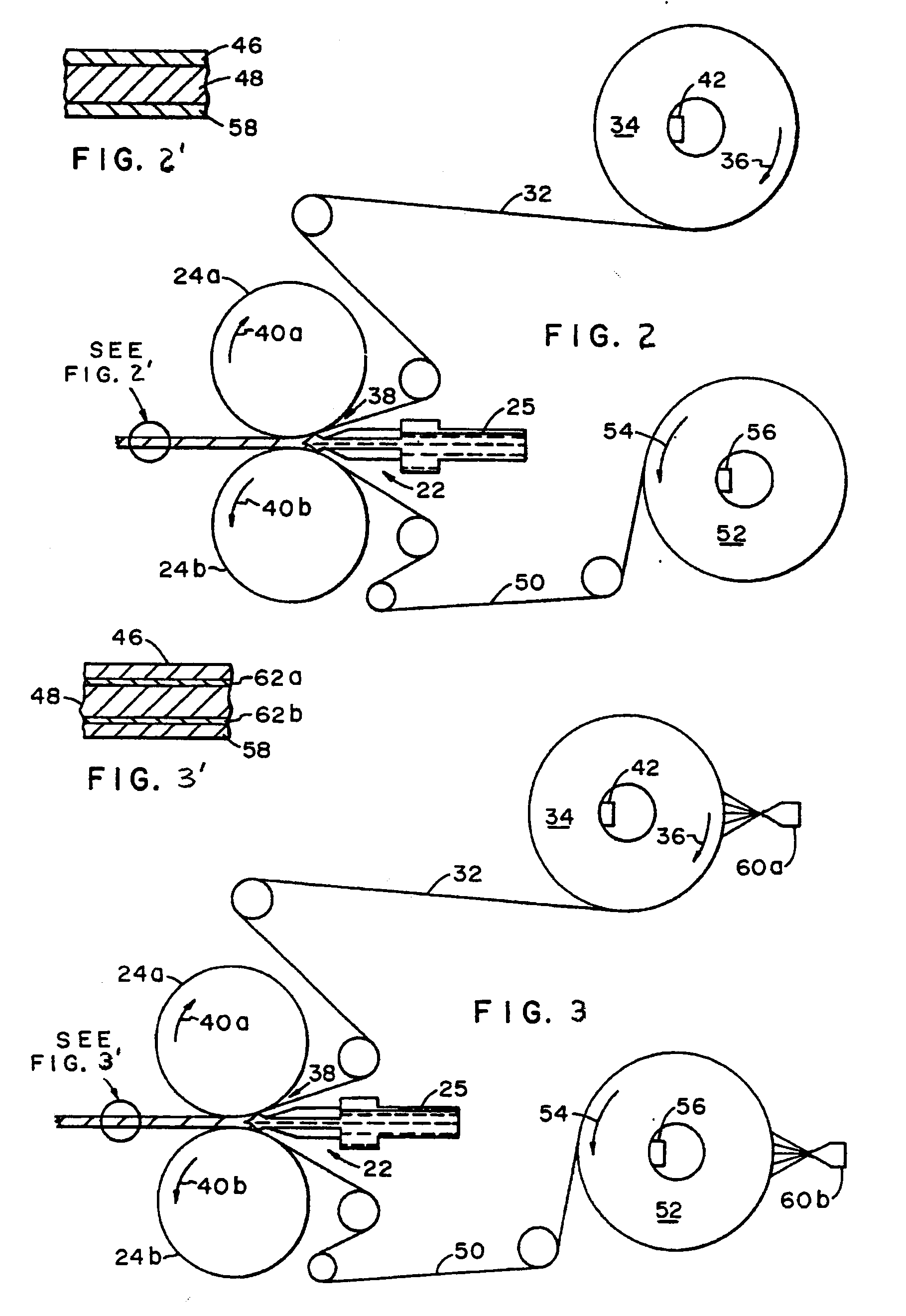Method for twin roll casting of aluminum clad magnesium
a twin roll casting and aluminum clad magnesium technology, applied in the field of metal sheets, can solve the problems of low thermal conductivity, deterioration of surface quality, and areas of localized cooling which will then crack, and achieve the effects of less oxidation, improved corrosion resistance of magnesium sheets, and easy processing of magnesium cast coils
- Summary
- Abstract
- Description
- Claims
- Application Information
AI Technical Summary
Benefits of technology
Problems solved by technology
Method used
Image
Examples
Embodiment Construction
[0022]Referring now to the process schematic drawings, FIG. 1 shows a twin roll caster 22, including internally cooled steel rolls 24a and 24b, and a delivery system for delivering molten magnesium 25. The delivery system is comprised of a trough 26, a tundish, or head box 28, and a caster feed, or nozzle tip 30. According to the invention, a band 32 of aluminum cladding is fed into the twin roll caster by unwinding from a coil 34 by rotation in direction 36. The band 32 is drawn into the roll bite 38 by the rotation of rolls 24a and 24b in the directions 40a and 40b. Brake 42 permits control of the tension in band 32. Hot working of solidified magnesium 25 and band 32 occur in the roll bite 38, as indicated by the opposing axle bearing loads L1 and L2. Alloying constituents may be added directly into channel 26 from feeder 44. FIG. 1 includes a detail FIG. 1′ which shows the twin roll cast composite product, including aluminum cladding 46 originating from band 32 and core 48 origin...
PUM
| Property | Measurement | Unit |
|---|---|---|
| Thickness | aaaaa | aaaaa |
| Angle | aaaaa | aaaaa |
Abstract
Description
Claims
Application Information
 Login to View More
Login to View More - R&D
- Intellectual Property
- Life Sciences
- Materials
- Tech Scout
- Unparalleled Data Quality
- Higher Quality Content
- 60% Fewer Hallucinations
Browse by: Latest US Patents, China's latest patents, Technical Efficacy Thesaurus, Application Domain, Technology Topic, Popular Technical Reports.
© 2025 PatSnap. All rights reserved.Legal|Privacy policy|Modern Slavery Act Transparency Statement|Sitemap|About US| Contact US: help@patsnap.com



